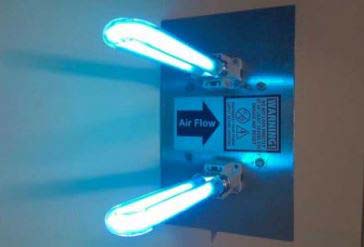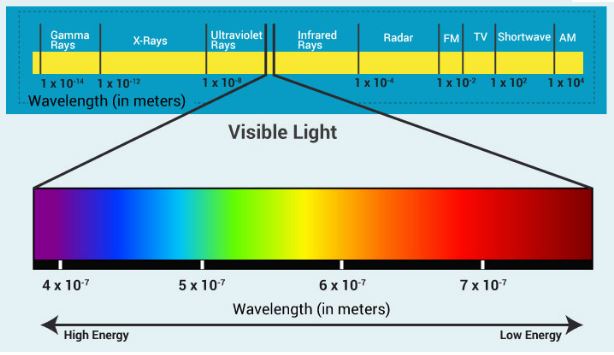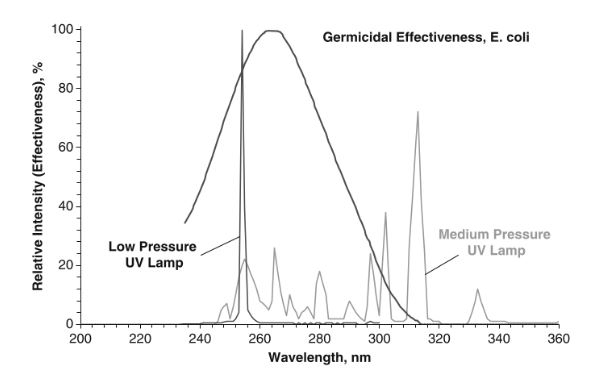
In crisis there is opportunity. Sadly, during the recent Corona virus (COVID-19) pandemic, some sales persons may exploit people’s fears by selling questionable products which don’t perform as promised.
Here we will focus upon using ultraviolet light (UV) to in dealing with pathogens (viruses, bacteria, micro-organisms) as a possible home upgrade.
What little bugs are swirling about and growing in the air you breathe? Most of us spend a lot amount of time in our homes sleeping, bathing, eating, and recreating, the so quality of our air matters.
This is where proper air filtration and even air sanitation (like ultraviolet lighting in HVAC ducting) may be and option for you.
But does UV lighting actually work? What kind of UV light should you get? There are single bulb, double bulb, even 4 bulb models, with 30 watt, 36 watt, and 72 watt versions. Some are 24 volt DC, while others are 120 volts AC. There are also DIY versions.
It seems every HVAC company is pushing to sell you on their UV system. These companies all tell you to buy their system if you can afford it.
But our review of their systems leaves us questioning their claims, and the quality and effectiveness of many of their products.
First, what is an ultraviolet lighting system? And how does it connect to your HVAC system? What is needed for it to work reliably?
Ultraviolet light occurs naturally within the spectrum of sunlight, except we cannot see it with our naked eye. UV “radiation” is known to age our skin, cause skin cancer, cause cataracts, yellow the whites of our eyeballs, break down plastics, and fade pigments and dyes.
Fortunately, UV also kills viruses and bacteria if it is the right wavelength and the exposure time is long enough.
Scientists have known for decades that broad-spectrum germicidal UV light, which has varying wavelengths between 200 and 400 nanometers (nm), is highly effective at killing many bacteria and viruses by destroying the molecular bonds that hold their DNA together. This conventional UV light is routinely used to decontaminate surgical equipment, but is harmful to human tissue.

Explaining the Ultraviolet Spectrum
UV-C 100-280 nm (nanometers, or 0.000000001 meters long)
UV-B 280 – 320 nm
UV-A 320-400 nm
Useful Range: 200 – 320 nm disinfects air and surfaces, to varying degrees and safety. Example: 260 to 265 nm is ideal for killing E. coli.
Useless Range: 320 – 400 nm (blacklights and sun tan lamps) is ineffective.

The household UV light units for HVAC systems are most typically installed by cutting a hole through the sheet metal wall of the heat exchange coils of the HVAC system. This type of installation, if there is a good seal, makes sure you are not exposed to the light.
But what UV wavelength are the best one for killing novel corona viruses (MRSA, H1N1, H5N1, and others), as well as (stinky) bacteria?
According to Columbia University Irving Medical Center, 222 nm (far wave) wavelength is ideal for killing MRSA, H1N1, H5N1, and other influenza (“flu”) viruses, without the negative human tissue consequences of broad spectrum UV lights. Because these are safe for human tissue, they are now being installed in hospital overhead lighting systems.
But does 222 nm matter inside of an enclosed HVAC system where the light is hidden and air is rushing by? No. Most commercially available UV light systems are 253.7 (254) nm units at either 30 watt, 36 watt, or 72 watt bulb varieties.
The wattage of the bulbs matters because the amount of Energy required to kill the pathogens = amount of Power x Time [ E(J) = P(W)× t(s) ]
So the higher the wattage, the less time will be required to kill the virus.
How much time is needed for UV light to kill viruses?
The research says at least 5 seconds for antibiotic resistant viruses, and often time as much as 2 minutes (Staphylococcus aureus and Enterococcus faecalis) Humidity also matters. The lower the humidity the better.
But when your HVAC system is circulating air, none of that air will be in front of any UV light system for even 5 seconds. So now what?
Here is what the United States Environmental Protection Agency (EPA) has to say about using ultraviolet lighting in HVAC systems:
“[T]ypical UVGI cleaners used in homes have limited effectiveness in killing bacteria and molds. Effective destruction of some viruses and most mold and bacterial spores usually requires much higher UV exposure than is provided in a typical home unit.” [Emphasis Added]
U.S. National Library of Medicine, National Institute for Health does have a write-up about a limited experiment with a very small control group. That study (of a 4 floor building) showed a measurable reduction in mold.
Always ask for written proof about viruses from these heating and cooling companies. These HVAC companies are claiming these products work for killing viruses and bacteria. In the laboratory UV lights do kill pathogens when the air is still. But what about fast moving air through a HVAC system?
Ask for independent verification based upon a published study before you spend hundreds of dollars (or in some cases thousands), to get a UV system installed in your HVAC system.
Your home is probably the largest investment you have. With that in mind, there are three things to justify when considering any home upgrade:
1) Cost – UV system cost $120 – $700 parts, plus the cost of labor for installation costs, plus ongoing bulb replacement costs each year.
2) Performance / Quality – Not known to work in a HVAC system application. Still awaiting evidence…
3) Return on investment (ROI) – None if it doesn’t work as promised.
Final Verdict? Fail
(Until we see evidence to support that it works in HVAC systems)
